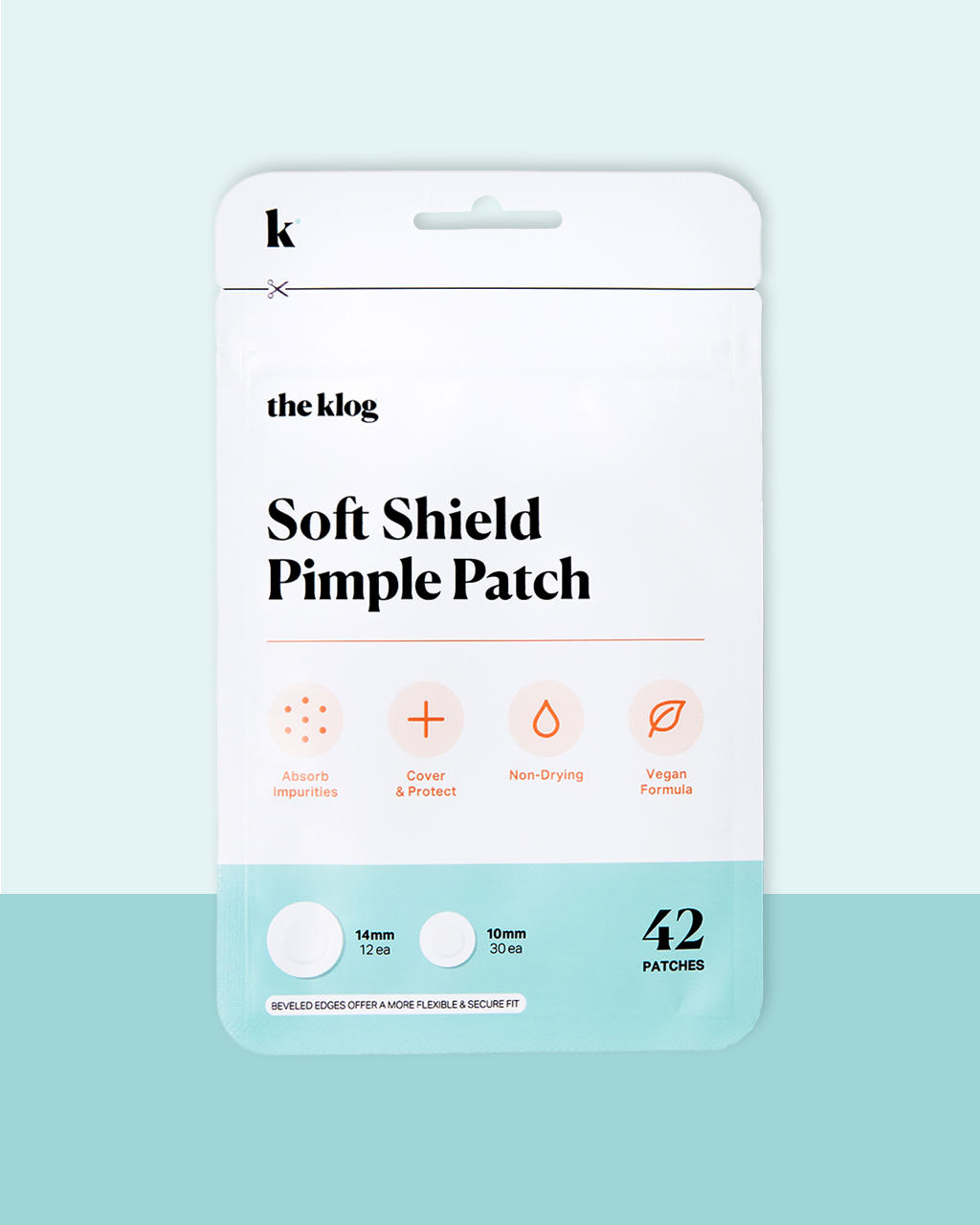In case you missed it, The Klog Soft Shield Pimple Patch is celebrating it’s one year anniversary since its official launch last year! Read on to know exactly why we think this product — and the pimple patch trend itself — is so great.
Pimple patches seem to be all over the beauty world lately, whether they’re circles, stars, bejeweled, or everything in-between. We explore the trend and dive a little bit deeper into why pimple patches are truly a must-have for any medicine cabinet.
What is a Pimple Patch?
A pimple patch is precisely what it sounds like: a sticker that’s meant to be placed right on top of a zit. This patch is made from a translucent, sticky, hydrocolloid material that stays put all day long.
The hydrocolloid material is key here, and we make our pimple patches with 100% vegan hydrocolloid. This is a very useful material for wound healing because it’s a breathable material that sticks to healthy skin, allowing wounds — in this case, pimples — the opportunity to heal.
Hydrocolloid also draws out impurities, and you can actually see the white stuff that’s accumulated on the patch after you’ve been wearing it for a while! The result is a pimple that’s flattened, less red, and on its way to disappearing completely (if it hasn’t already).
Pimple patches are effective, extremely gentle, and target individual spots versus taking an all-over approach, which can wreak havoc on otherwise healthy skin.
What Makes Our Soft Shield Pimple Patch Different
You might have noticed a handful of pimple patches already on the market. It hasn’t always been that way! Interestingly, K-beauty — and Soko Glam specifically — helped make pimple patches “a thing” in the Western world.
Charlotte Cho had discovered pimple patches back in 2008 while working at Samsung in South Korea, and within five years they were part of the Soko Glam curation, with Missha’s Speedy Solution Anti Trouble Patch. After years of testing different products, investigating, and pulling from insights based on community feedback, the Soft Shield Pimple Patch was born.
Our pimple patches are different for a few reasons:
- Beveled edges — This allows for a more secure fit on even the trickiest spots, like at your jaw, on your shoulders, or even around your nose. Non-beveled pimple patches have a tendency to “unstick.”
- Multiple sizes — Each order comes with both 10mm and 14mm pimple patches. We opted against anything smaller than that since patches that are too tiny often aren’t as effective. Our sizes can be used on small, medium, and large pimples, including those caused by cystic acne.
- Bang for your buck — For about the cost of a fancy coffee drink ($6), you get a whopping 42 pimple patches. That’s 42 pimples that’ll barely see the light before they’re gone!
Skin Types That Benefit from Pimple Patches
The reality is that we all get pimples, which means that this handy product is great for anyone to keep on hand. In fact, half of adults between 25 and 45 experience adult acne. Pimple patches provide a gentle and effective way to keep those blemishes under control.
Plus, the vegan hydrocolloid material is safe and gentle for use, so these pimple patches are also considered pregnancy-safe, and safe enough for teens and tweens to use, too!
How to Use a Pimple Patch
The instruction manual for pimple patches is pretty dang easy! After cleaning and drying your skin, place the pimple patch directly on top of your pimple. It will stick to the area until you remove it, working its magic to pull the gunk out of your pores all the while. The result is a flattened, less inflamed pimple. Because the patch is clear, others probably won’t even notice you’re wearing it, which means you can wear them anywhere — from Zoom meetings to the grocery store.














